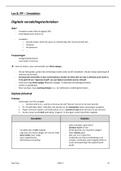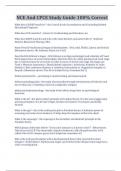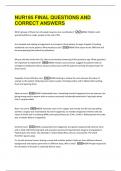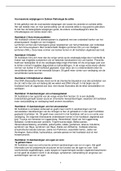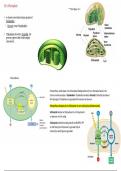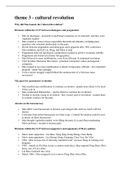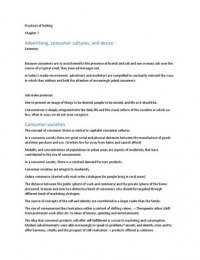GDV.
Modern Banking & Financial Technology
Sample of questions for oral examination
Part I: Infrastructure
How would you define money?
By definition, money is an asset that is generally accepted as payment for goods and services or
repayment of debt. Its emergence is based on two main theories: the Metallist theory and the Chartalist
theory. One explains the need of money because of the double coincidence of wants while the other is
on the promises of repayment (i.e., debts).
Money is a:
- mean of payment (used in exchange of goods and services -transfer value-).
- unit of account (used to quote prices -money is unique-).
- store of value (used to transfer purchasing power into the future -be durable-).
Two concepts related to money are the liquidity and the inflation.
Is bitcoin money?
Bitcoin is accepted as payment for goods and services but only to a certain extent. Same goes for the
repayment of debts.
Is a check money?
A check cannot be considered as money. It is solely the instruction to the bank to take funds from an
account and transfer it to another account. It is no final payment: it sets a series of transactions from
bank to bank passing by the central bank.
Is an apple money?
It all depends on the context and on the society. In current society, apples are not considered as money,
as they are not respecting the three features listed above.
Too much unanticipated inflation affects borrowers and lenders in a different way. We talk about
“redistribution of wealth”. Can you explain this?
The movement of inflation is closely linked to the debts. In case of higher-than-expected inflation, the
value of the debt decreases for the lender (as prices and value of money are inversely correlated), which
is benefiting the borrower and adding additional costs for the lender. The borrower will still pay the
same but there is a redistribution of wealth, at the expense of the lender.
Why can it be a problem?
If inflation is too volatile and unpredictable (which it usually is), it becomes a barrier to trading and
financing in unstable economies.
What is fiat money?
Money whose value comes from government decree and no intrinsic value. As it is created from the
government, every commercial shop in the country is obliged to accept this money. It also became a
mean of payment for taxes. This type of money generated reductions in coordination and transaction
costs but increased the concentration of the power. It is said that fiat money is unbacked money.
What makes it sustainable?
The government must make sure to limit the volume of money in circulation. It should not issue too
much of it.
1
, GDV.
What are the pros and cons of digitalisation of money?
Pros Cons
Proceed faster. Did not reduce the risk: cyber risk.
Reduce transaction costs. Restrict anonymous transactions.
Most governments support it (easier
to tax).
Prevent money laundering.
Improve the use of monetary policy.
What are the benefits and threats of cryptocurrencies?
Benefits Threats
Security. Security.
Cost of intermediation reduced. Illegal activity.
Efficiency gains. Fiat money (volatile).
trust less agreements Instability of monetary environment.
Scaling.
Energy consumption.
Price manipulation.
The features of transparency, immutability and consensus allow peers to transact in an environment of
conflicting interests without the need for trust.
Will cryptocurrencies remove banks?
As governments need centralised banks to claim taxes, it is doubtful it will. Also, in the case of
cryptocurrency becoming accepted by the whole population, the high volatility of it might decrease the
purchasing power of the owner, without anyone (government or owner) being able to do something
about it. Although some cryptocurrencies might hold every requirement for it to be accepted and used
without problem among people, the government is unlikely to be inclined to accept it.
What is narrow banking?
Having banks with no deposits.
What are the good and bad sides of it?
What is a platform (and a multi-sided platform)?
A platform allows agents to interact. The decision of each agent affects the outcomes of the other ones,
typically through an externality. Such markets reduce transaction-cost problems. The goal of these
platforms is to create a network. The direct network effect allows agents to create value through
connecting directly with other agents (e.g., telephone network). In this vein, the choice of the platform
with such effect depends on how many people an agent can connect with on it. The more people there
are, the more the agent will want to join. The indirect network effect happens when the platform
connects agents from different groups. Newspapers connect readers and advertisers, but they don’t
have the same purpose: one has interests in the content of the newspaper whereas the later has on
how many people read it.
Examples?
Netflix, Uber Eats, Amazon, Google, Instagram (with a double direct and indirect effects), Apple Music,
Payment systems and credit cards (indirect network effect – the more people use Visa, the more
2
Modern Banking & Financial Technology
Sample of questions for oral examination
Part I: Infrastructure
How would you define money?
By definition, money is an asset that is generally accepted as payment for goods and services or
repayment of debt. Its emergence is based on two main theories: the Metallist theory and the Chartalist
theory. One explains the need of money because of the double coincidence of wants while the other is
on the promises of repayment (i.e., debts).
Money is a:
- mean of payment (used in exchange of goods and services -transfer value-).
- unit of account (used to quote prices -money is unique-).
- store of value (used to transfer purchasing power into the future -be durable-).
Two concepts related to money are the liquidity and the inflation.
Is bitcoin money?
Bitcoin is accepted as payment for goods and services but only to a certain extent. Same goes for the
repayment of debts.
Is a check money?
A check cannot be considered as money. It is solely the instruction to the bank to take funds from an
account and transfer it to another account. It is no final payment: it sets a series of transactions from
bank to bank passing by the central bank.
Is an apple money?
It all depends on the context and on the society. In current society, apples are not considered as money,
as they are not respecting the three features listed above.
Too much unanticipated inflation affects borrowers and lenders in a different way. We talk about
“redistribution of wealth”. Can you explain this?
The movement of inflation is closely linked to the debts. In case of higher-than-expected inflation, the
value of the debt decreases for the lender (as prices and value of money are inversely correlated), which
is benefiting the borrower and adding additional costs for the lender. The borrower will still pay the
same but there is a redistribution of wealth, at the expense of the lender.
Why can it be a problem?
If inflation is too volatile and unpredictable (which it usually is), it becomes a barrier to trading and
financing in unstable economies.
What is fiat money?
Money whose value comes from government decree and no intrinsic value. As it is created from the
government, every commercial shop in the country is obliged to accept this money. It also became a
mean of payment for taxes. This type of money generated reductions in coordination and transaction
costs but increased the concentration of the power. It is said that fiat money is unbacked money.
What makes it sustainable?
The government must make sure to limit the volume of money in circulation. It should not issue too
much of it.
1
, GDV.
What are the pros and cons of digitalisation of money?
Pros Cons
Proceed faster. Did not reduce the risk: cyber risk.
Reduce transaction costs. Restrict anonymous transactions.
Most governments support it (easier
to tax).
Prevent money laundering.
Improve the use of monetary policy.
What are the benefits and threats of cryptocurrencies?
Benefits Threats
Security. Security.
Cost of intermediation reduced. Illegal activity.
Efficiency gains. Fiat money (volatile).
trust less agreements Instability of monetary environment.
Scaling.
Energy consumption.
Price manipulation.
The features of transparency, immutability and consensus allow peers to transact in an environment of
conflicting interests without the need for trust.
Will cryptocurrencies remove banks?
As governments need centralised banks to claim taxes, it is doubtful it will. Also, in the case of
cryptocurrency becoming accepted by the whole population, the high volatility of it might decrease the
purchasing power of the owner, without anyone (government or owner) being able to do something
about it. Although some cryptocurrencies might hold every requirement for it to be accepted and used
without problem among people, the government is unlikely to be inclined to accept it.
What is narrow banking?
Having banks with no deposits.
What are the good and bad sides of it?
What is a platform (and a multi-sided platform)?
A platform allows agents to interact. The decision of each agent affects the outcomes of the other ones,
typically through an externality. Such markets reduce transaction-cost problems. The goal of these
platforms is to create a network. The direct network effect allows agents to create value through
connecting directly with other agents (e.g., telephone network). In this vein, the choice of the platform
with such effect depends on how many people an agent can connect with on it. The more people there
are, the more the agent will want to join. The indirect network effect happens when the platform
connects agents from different groups. Newspapers connect readers and advertisers, but they don’t
have the same purpose: one has interests in the content of the newspaper whereas the later has on
how many people read it.
Examples?
Netflix, Uber Eats, Amazon, Google, Instagram (with a double direct and indirect effects), Apple Music,
Payment systems and credit cards (indirect network effect – the more people use Visa, the more
2

